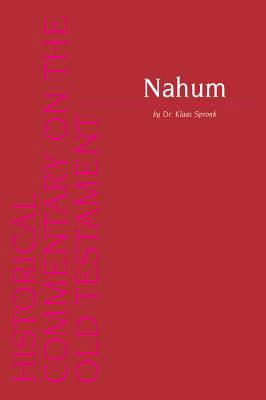
Je cadeautjes zeker op tijd in huis hebben voor de feestdagen? Kom langs in onze winkels en vind het perfecte geschenk!
- Afhalen na 1 uur in een winkel met voorraad
- Gratis thuislevering in België vanaf € 30
- Ruim aanbod met 7 miljoen producten
Je cadeautjes zeker op tijd in huis hebben voor de feestdagen? Kom langs in onze winkels en vind het perfecte geschenk!
- Afhalen na 1 uur in een winkel met voorraad
- Gratis thuislevering in België vanaf € 30
- Ruim aanbod met 7 miljoen producten
Zoeken
Omschrijving
In this commentary an attempt is made to prove that the book of Nahum was written in Jerusalem, ca. 660 BCE, by a talented, faithful royal scribe. He used the pseudonym Nahum as an indication of his purpose: to encourage the people of Judah groaning under the tyranny of the Assyrians. He took his inspiration from the earlier prophetics of Isaiah and from Psalms, which he probably regularly heard or sang in the temple. He also used his familiarity with the Assyrian literature, especialy with the texts of vassal treaties and royal annals, to express in fitting words the announcement of the downfall of the Assyrian empire symbolized by its capital Niniveh.After the fulfilment of this prediction in 612 BCE the book of Nahum must have become very popular, as it proved clear example of true prophecy. It had much influence upon Habakuk and exilic prophets like the Second Isaiah and Jeremiah, who interpreted its message in the new situation of the Babylonian opprression. Traces of this influence are also found in the literature of the community of Qumran and in the NT.
Alleen bij Standaard Boekhandel
+ 101 punten op je klantenkaart van Standaard Boekhandel
Beoordelingen
We publiceren alleen reviews die voldoen aan de voorwaarden voor reviews. Bekijk onze voorwaarden voor reviews.










